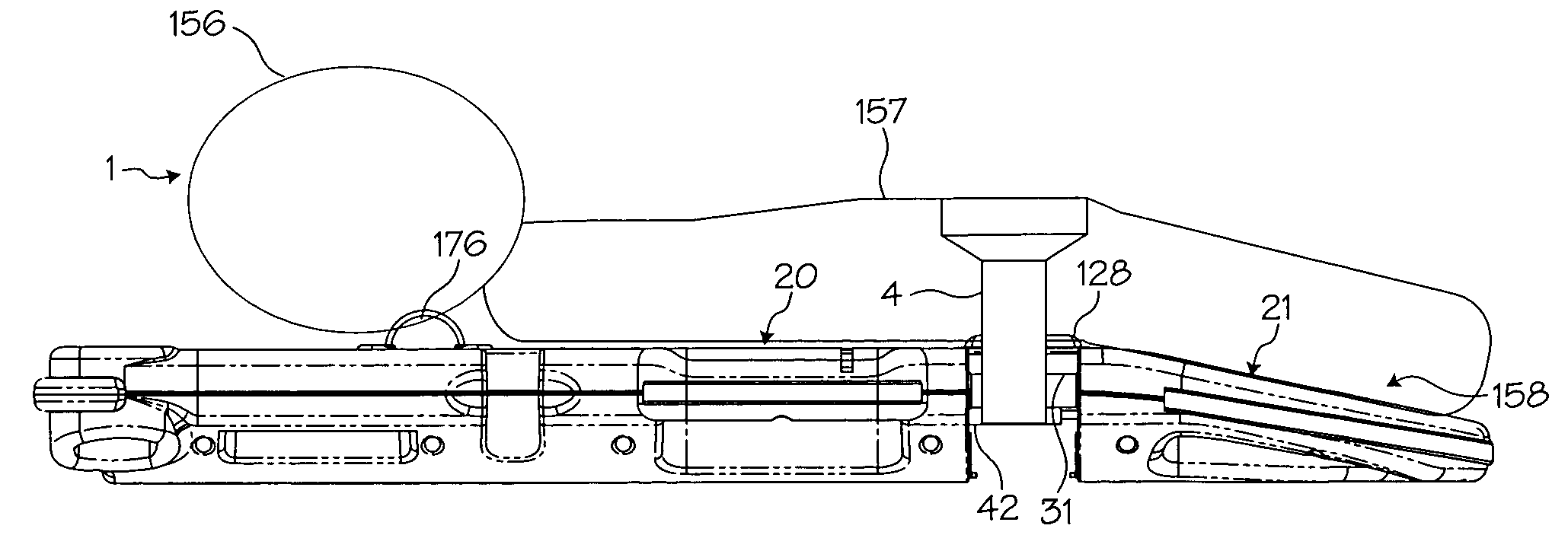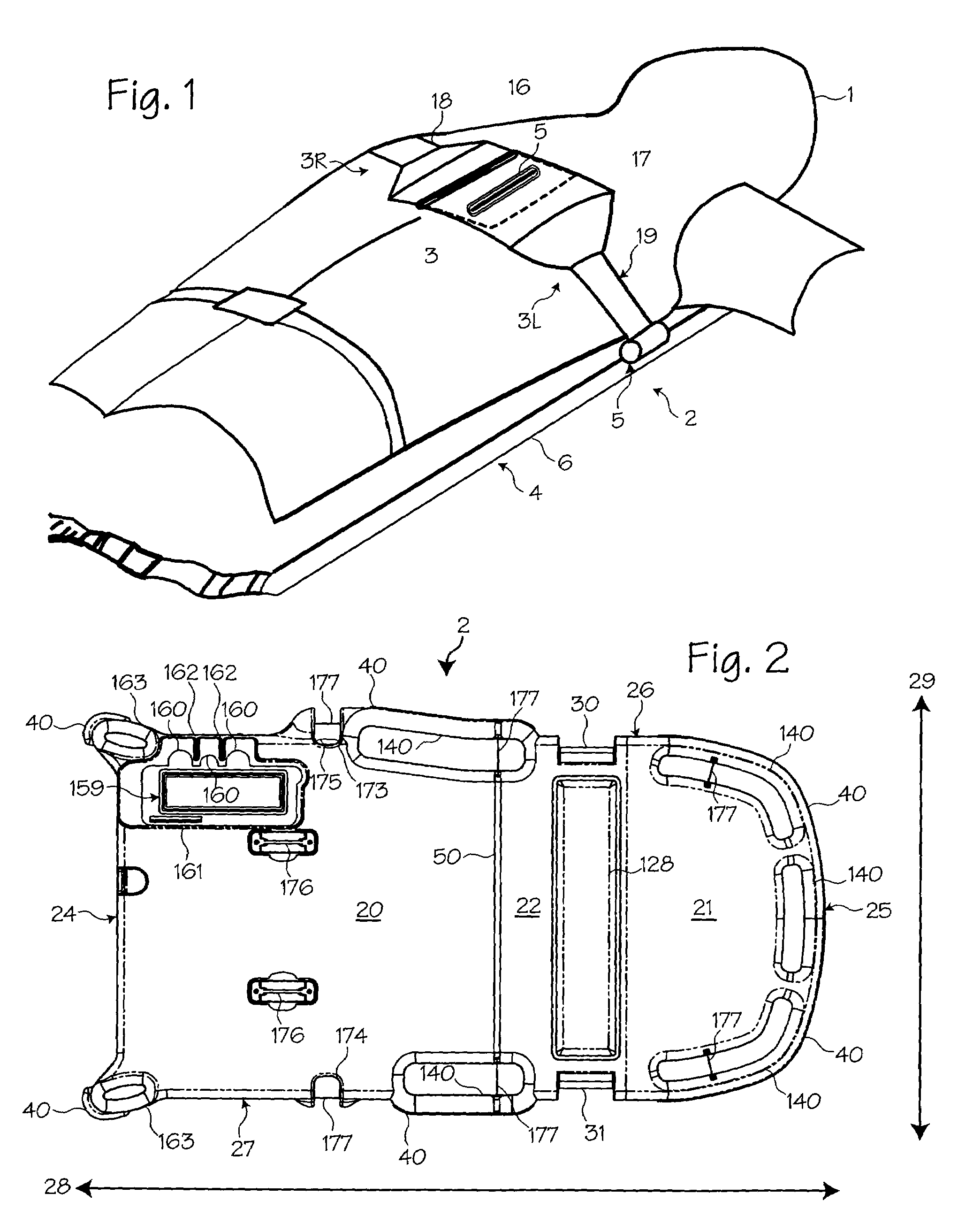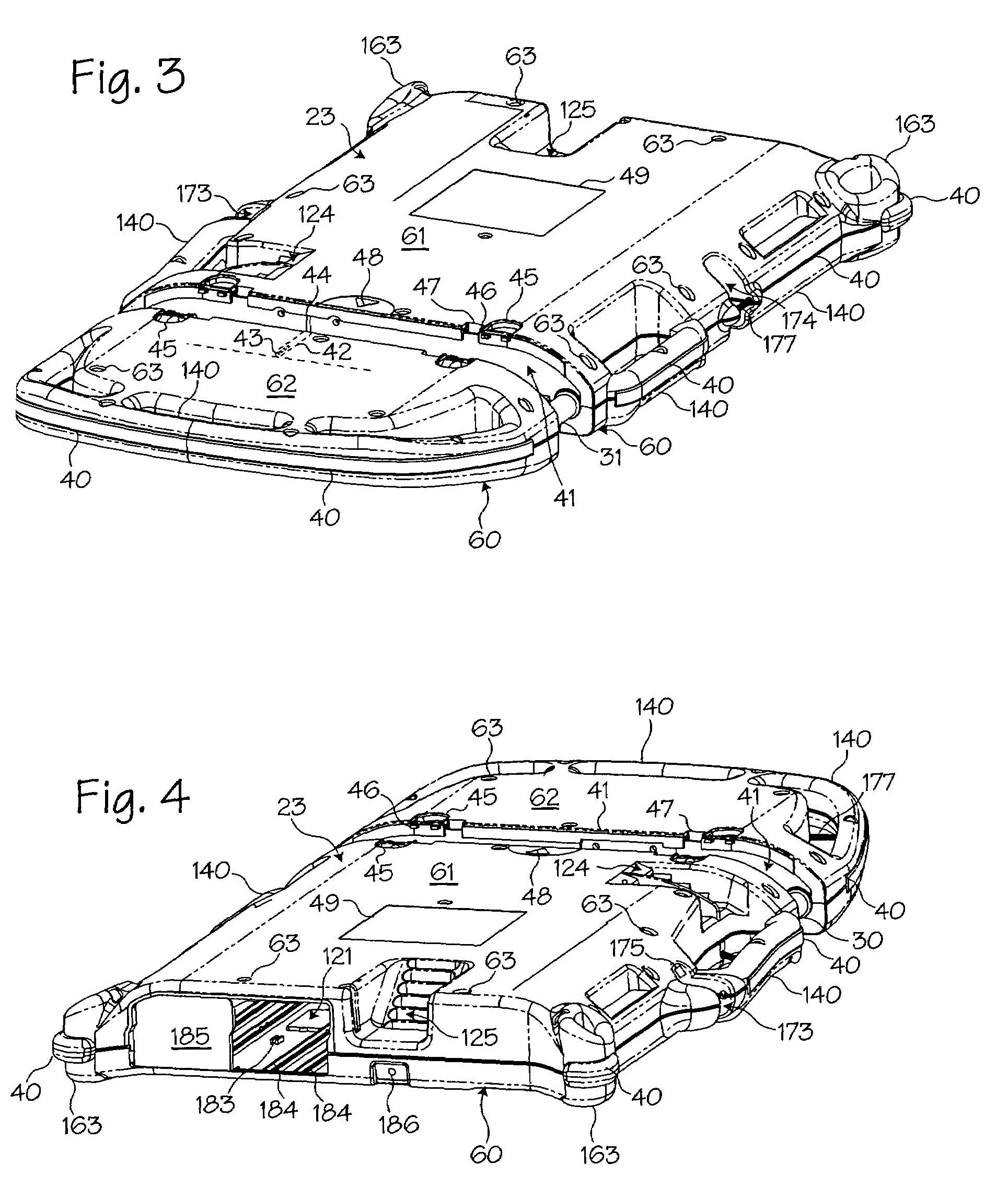Lightweight electro-mechanical chest compression device
a chest compression and electro-mechanical technology, applied in the field of cardiopulmonary resuscitation, can solve the problems of inability to maintain adequate chest compression for more than a few minutes, and the failure of cpr to sustain or revive patients, etc., and achieve the effects of saving energy, easy replacement, and light weight materials
- Summary
- Abstract
- Description
- Claims
- Application Information
AI Technical Summary
Benefits of technology
Problems solved by technology
Method used
Image
Examples
Embodiment Construction
[0017]FIG. 1 shows the chest compression belt fitted on a patient 1. A chest compression device 2 applies compressions with the belt 3, which has a right belt portion 3R and a left belt portion 3L. The chest compression device 2 includes a belt drive platform 4 and a compression belt cartridge 5 (which includes the belt). The belt drive platform includes a housing 6 upon which the patient rests, a means for tightening the belt, a processor and a user interface disposed on the housing. The belt includes pull straps 18 and 19 and wide load distribution sections 16 and 17 at the ends of the belt. The means for tightening the belt includes a motor attached to a drive spool, around which the belt spools and tightens during use. The design of the chest compression device, as shown herein, allows for a lightweight electro-mechanical chest compression device. The fully assembled chest compression device weighs only 29 pounds, and is thus hand-portable over long distances. (The device itself...
PUM
 Login to View More
Login to View More Abstract
Description
Claims
Application Information
 Login to View More
Login to View More - R&D
- Intellectual Property
- Life Sciences
- Materials
- Tech Scout
- Unparalleled Data Quality
- Higher Quality Content
- 60% Fewer Hallucinations
Browse by: Latest US Patents, China's latest patents, Technical Efficacy Thesaurus, Application Domain, Technology Topic, Popular Technical Reports.
© 2025 PatSnap. All rights reserved.Legal|Privacy policy|Modern Slavery Act Transparency Statement|Sitemap|About US| Contact US: help@patsnap.com



